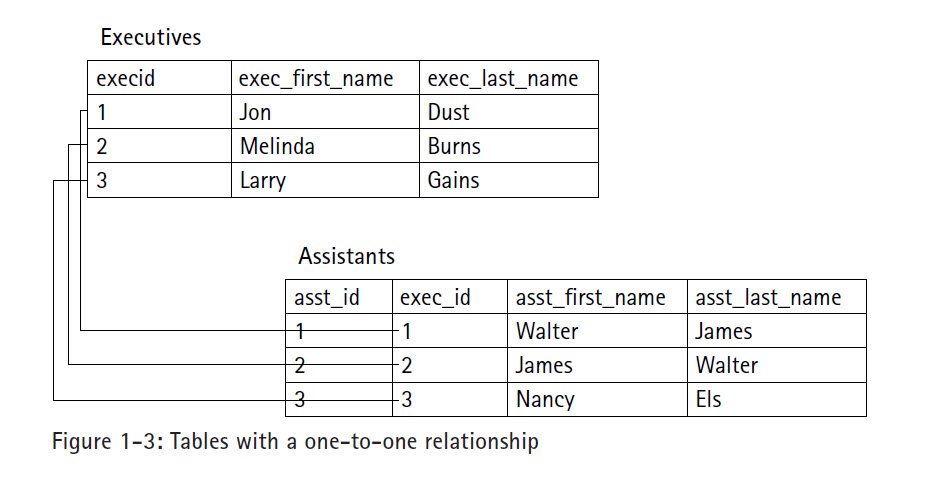
In the world of database management systems, relationships play a crucial role in organizing and connecting data across different tables. MySQL, one of the most popular relational database management systems, provides various relationship types to establish connections between tables and ensure data integrity. Understanding these relationship types is essential for designing efficient and robust database structures.
In this article, we will explore the relationship types available in MySQL and their characteristics.
1. One-to-One Relationship:
In a one-to-one relationship, each record in one table is directly related to one and only one record in another table. This type of relationship is relatively rare but can be useful in specific scenarios. For example, suppose we have two tables: “Users” and “UserProfiles.” Each user can have only one profile, and each profile is associated with only one user.
In this case, a one-to-one relationship between the “Users” and “UserProfiles” tables can be established.

2. One-to-Many Relationship:
The one-to-many relationship is the most common type of relationship in database design. In this relationship, a record in one table can be associated with one or more records in another table. For instance, consider the relationship between the “Departments” and “Employees” tables.
Each department can have multiple employees, but each employee belongs to only one department. Therefore, a one-to-many relationship is established between the “Departments” table (one side) and the “Employees” table (many side).

3. Many-to-Many Relationship:
A many-to-many relationship occurs when records in one table can be associated with multiple records in another table, and vice versa. To implement a many-to-many relationship in MySQL, an intermediate table, known as a junction or associative table, is required.

This table acts as a bridge between the two tables involved in the relationship. For example, consider a scenario where we have two tables: “Students” and “Courses.” A student can enroll in multiple courses, and a course can have multiple students. To represent this relationship, we create a third table called “Enrollments,” which includes foreign keys referencing the “Students” and “Courses” tables.
4. Self-Referencing Relationship:
A self-referencing relationship occurs when a table is related to itself. This relationship is commonly used to represent hierarchical data or to establish relationships within the same entity. For instance, consider a table called “Employees” that stores information about employees and their managers. Each employee has a reference to their manager within the same table, creating a self-referencing relationship.
MySQL provides mechanisms such as primary keys, foreign keys, and constraints to enforce and maintain the integrity of these relationships. Primary keys uniquely identify each record in a table, while foreign keys establish links between tables based on common fields. Constraints, such as “CASCADE,” “RESTRICT,” or “SET NULL,” can be applied to define the actions performed when related records are modified or deleted.
In conclusion, understanding relationship types in MySQL is crucial for designing efficient and well-structured databases. Whether it’s a one-to-one, one-to-many, many-to-many, or self-referencing relationship, MySQL offers a range of options to establish connections between tables and ensure data integrity.
By properly utilizing these relationship types and associated mechanisms, developers and database administrators can create powerful and interconnected database systems to meet the needs of various applications.
You may also like:- 22 Useful JavaScript Functions You Need To Know
- CSS3 nth-child Selector – A Comprehensive Guide
- PHP Loops – A Comprehensive Guide
- Different Types of Functions in PHP
- Various String Types in PHP – Utilizing ctype Functions
- Understanding Conditional Statements in PHP
- Mastering PHP Arrays – A Comprehensive Guide
- Exploring Strings in PHP – A Comprehensive Guide
- Performing CRUD Operations with PHP and MySQL
- A Guide to PHP File Operations – Opening, Reading, Creating, Writing, and Closing Files








